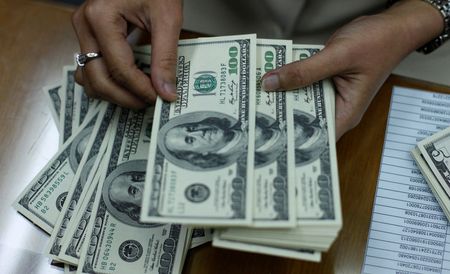By Lewis Krauskopf
NEW YORK (Reuters) – The U.S. government looks “more likely than not” to shut down later this year due to political differences on spending that could temporarily hit economic growth, Goldman Sachs analysts said in a research note.
The Goldman economics analysts said prior shutdowns – which occur if Congress fails to pass annual spending bills – have stemmed either from disagreement on the level or distribution of spending, or a dispute over other issues that one party wants to address in spending legislation.
“At the moment, both types of risks are in play,” Goldman said in the note.
A broad government shutdown stands to directly reduce growth by around 0.15 percentage points for each week it lasts, while the reduction could be 0.2 percentage points a week when including a modest impact in the private sector, according to Goldman.
However, the analysts said, in the quarter following the government reopening, growth would rise by the same amount.
Markets have not had strong reactions to three past shutdowns, in 1995-1996, 2013, and 2018-2019, according to the note.
Equity markets were flat or up at the end of those shutdowns, “though in each instance equity prices were lower at some point in the days following the start of the shutdown than when it began,” the analysts wrote, while the 10-year Treasury yield declined “more consistently” after the start of the shutdowns.
The Goldman analysts said a shutdown “is not a foregone conclusion,” pointing to support for a temporary extension after the end of the fiscal year on Sep. 30.
They also noted that compared to the severe macroeconomic impact of a failure to raise the U.S. debt limit, the less dramatic economic effect of a shutdown “also makes it more likely that Congress fails to act in time.”
(Reporting by Lewis Krauskopf; Editing by Bill Berkrot)

